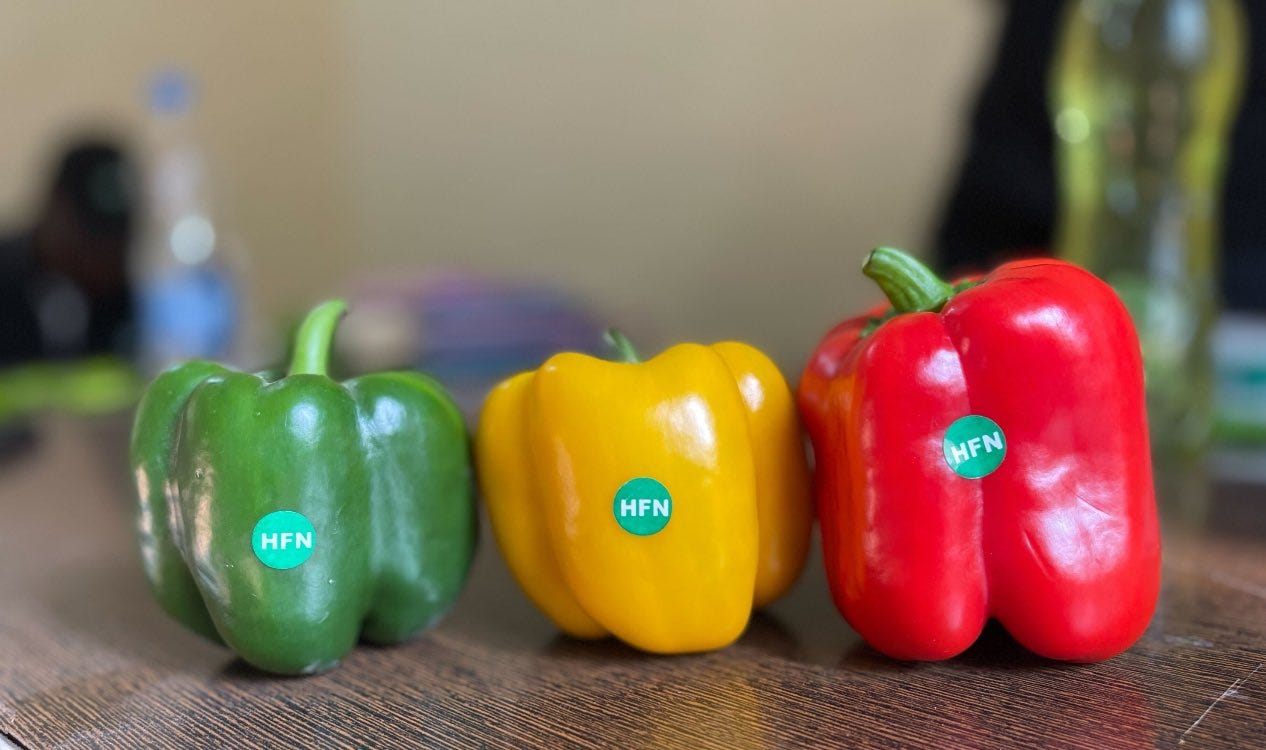National Mission on Natural Farming: A New Era for Indian Agriculture
By addressing economic, environmental, and social challenges faced by the agricultural sector, NMNF has the potential to redefine the future of Indian farming, comprising small and marginal farmers.
National Mission on Natural Farming
India stands on the verge of a transformative revolution in its agricultural sector, thanks to the launch of the National Mission on Natural Farming (NMNF). This visionary initiative, a standalone Centrally Sponsored Scheme approved by the Union Cabinet under the leadership of Prime Minister Narendra Modi, aims to shift Indian agriculture towards a sustainable, eco-friendly, and economically viable model. As the country grapples with challenges posed by conventional farming practices, the NMNF offers a holistic solution that aligns economic growth with environmental conservation.
The Imperative for Change
For decades, India's agricultural system has relied heavily on chemical-intensive practices, particularly evident in the paddy-wheat monoculture predominant in states like Punjab and Haryana. While this method has historically contributed to India’s food security, it has come at a steep ecological and economic cost:
Groundwater Depletion: Over-extraction for irrigation has pushed water tables to alarming levels.
Chemical Dependency: Excessive use of fertilizers, pesticides, and weedicides has degraded soil health and polluted water sources.
Economic Stagnation: Despite increasing input costs, farmer incomes have remained largely stagnant.
Health Risks: Exposure to toxic agrochemicals poses significant risks to farmers and consumers alike.
This unsustainable model necessitated an urgent paradigm shift, leading to the conception of the NMNF.
A Paradigm Shift: What is NMNF?
The National Mission on Natural Farming is more than just a government program; it aims to be a movement towards chemical-free, nature-aligned farming practices. The mission seeks to create a resilient agricultural ecosystem by tapping into as well as emphasizing traditional knowledge, local resources, and cutting-edge innovations in natural farming.
Key Features of the NMNF
The NMNF is a well-funded and ambitious initiative designed for widespread impact:
Financial Outlay: ₹2481 crore (Central share: ₹1584 crore; State share: ₹897 crore)
Duration: Operational till the end of the 15th Finance Commission period (2025-26)
Coverage:
1 crore farmers across 15,000 clusters in Gram Panchayats
7.5 lakh hectares of farmland
Focus: Adoption of cost-effective, chemical-free inputs like Jeevamrit, Beejamrit, and other bio-enhancers.
Implementation Strategy
To ensure the mission's success, a robust multi-tiered strategy has been devised:
Bio-input Resource Centers (BRCs):
Establishment of 10,000 centers to produce and distribute natural farming inputs.
Model Demonstration Farms:
2,000 farms at Krishi Vigyan Kendras (KVKs), Agricultural Universities, and farmers' fields to serve as practical learning hubs.
Farmer Training:
Farmer Master Trainers will lead workshops and hands-on training sessions.
On-ground Support:
Deployment of 30,000 Krishi Sakhis and Community Resource Persons (CRPs) to provide localized guidance.
Certification System:
A simplified certification process for natural farming produce to enhance marketability and consumer trust.
Why Natural Farming?
The NMNF is grounded in the principle that nature holds the key to sustainable agriculture. The anticipated benefits are multi-fold:
Economic Benefits
Cost Reduction: Farmers save on expensive fertilizers and pesticides, leading to improved profit margins.
Higher Market Value: Certified natural produce commands premium prices in domestic and international markets.
Ecological Benefits
Soil Health: Increased microbial activity and organic content improve soil fertility.
Water Efficiency: Practices enhance water retention, reducing irrigation demands.
Climate Resilience: Farms are better equipped to handle droughts, floods, and waterlogging.
Health and Environmental Benefits
Reduced Chemical Exposure: Safer for both farmers and consumers.
Carbon Sequestration: Enhanced soil carbon content helps combat climate change.
Financial and Physical Targets
The NMNF's ambitious targets underscore its transformative potential:
Farmer Outreach: 1 crore farmers to be initiated into natural farming practices.
Land Coverage: 7.5 lakh hectares to be transitioned to natural farming.
Input Preparation: 18.75 lakh farmers trained to prepare natural inputs.
Certification: Implementation of easy certification for enhanced credibility of natural farming produce.
Prime Minister’s Vision and Support
Prime Minister Narendra Modi has championed the cause of natural farming, calling it a game-changer for Indian agriculture. In his Independence Day address, he lauded the farmers who have already adopted sustainable practices, emphasizing their critical role in environmental conservation. The NMNF is a crucial step towards realizing his vision of doubling farmers' incomes while safeguarding the environment.
Funding Challenges and the Need for a 100% Centrally Sponsored Scheme
As stated before, the National Mission on Natural Farming (NMNF) comes with a significant financial outlay of ₹2481 crore, with ₹1584 crore contributed by the Central Government and ₹897 crore expected from the states. However, the current sanction is valid only until March 31, 2026, and many states, particularly debt-laden and cash-strapped ones like Punjab, may struggle to allocate even their modest share of the funding. This fiscal constraint could jeopardize the scheme’s implementation, potentially causing it to fail before it can gain momentum.
To mitigate this risk, it would be prudent for the Government of India (GOI) to make the NMNF a 100% Centrally Funded Scheme at least during its initial years. This approach would ensure uninterrupted implementation and allow the scheme to establish a solid foundation. From 2026-27 onwards, provisions for state contributions could either be incorporated into the Central Finance Commission devolution plan or phased in gradually, giving states ample time to align their budgetary priorities. Such measures would not only prevent delays but also enable the program to scale effectively, ensuring its long-term success.
Promising Beginnings: Entrepreneurs and State-Level Initiatives
Though the National Mission on Natural Farming (NMNF) is still in its early stages, the enthusiasm among farmers, state governments, and private entrepreneurs indicates a promising trajectory. Even before the scheme's official launch, visionaries like Ruchit Garg, operating out of Mohali, Punjab, have championed organic farming, particularly in vegetable cultivation. Building on the success of their “Sarthi” model in Western Uttar Pradesh, which employed community volunteers to work with Farmer Producer Organizations (FPOs), they have adapted their Harvesting Farmer Network (HFN) to engage directly with individual farmers, aligning their strategies with local cultural contexts.
Their initiative in Talwandi Sabo Tehsil, Bathinda district, Punjab, is already delivering impressive results, with agri-partners cultivating capsicums reaping significant benefits. Such entrepreneurial efforts, alongside state-supported natural farming pilots, have demonstrated improved yields, reduced input costs, and healthier ecosystems. These success stories are expected to multiply as NMNF gains momentum, inspiring millions of farmers across the country to adopt sustainable farming practices.
Summing Up
The National Mission on Natural Farming (NMNF) is more than just an agricultural reform—it is a transformative movement towards a sustainable, self-reliant, and eco-conscious India. By addressing the economic, environmental, and social challenges faced by the agricultural sector, NMNF has the potential to redefine the future of farming. Complementing this mission, entrepreneurial initiatives like the Harvesting Farmer Network (HFN) have already made strides in promoting natural and organic farming in regions like Western Uttar Pradesh and Punjab, showcasing the viability of sustainable farming practices. HFN's successes, from empowering farmers in Western UP through tailored interventions to cultivating high-value crops like capsicums in Talwandi Sabo, Punjab, highlight the potential for synergy between private initiatives and government efforts1. As NMNF unfolds, it promises not only to empower farmers but also to contribute significantly to global efforts in combating climate change and ensuring food security. This marks the beginning of a new era for Indian agriculture—one deeply rooted in harmony with nature.
DISCLAIMER: This is NOT a paid promotion.
Punjab: Unlocking the Potential of Farmer Producer Organizations (FPOs)
The Role and Potential of FPOs in Punjab








Since NF is free of chemical stimulants, looks like production will be low, which could be a disincentive for the farmer, although better price could offset that. This could be the reason for this small pilot of about 1% of land. Farmers of Punjab and WB are less likely to adapt because of political issues and the extent of corruption involved. As usual, states like UP, MP, Gujarat will be the biggest participants and beneficiaries.
Punjab, HP, WB will crib about 897 crores, while they don't think twice before spending thousands of crores on freebies.
Overall, a good step in right direction, we expect at least 50% of farmers to adapt to it next 10 years.